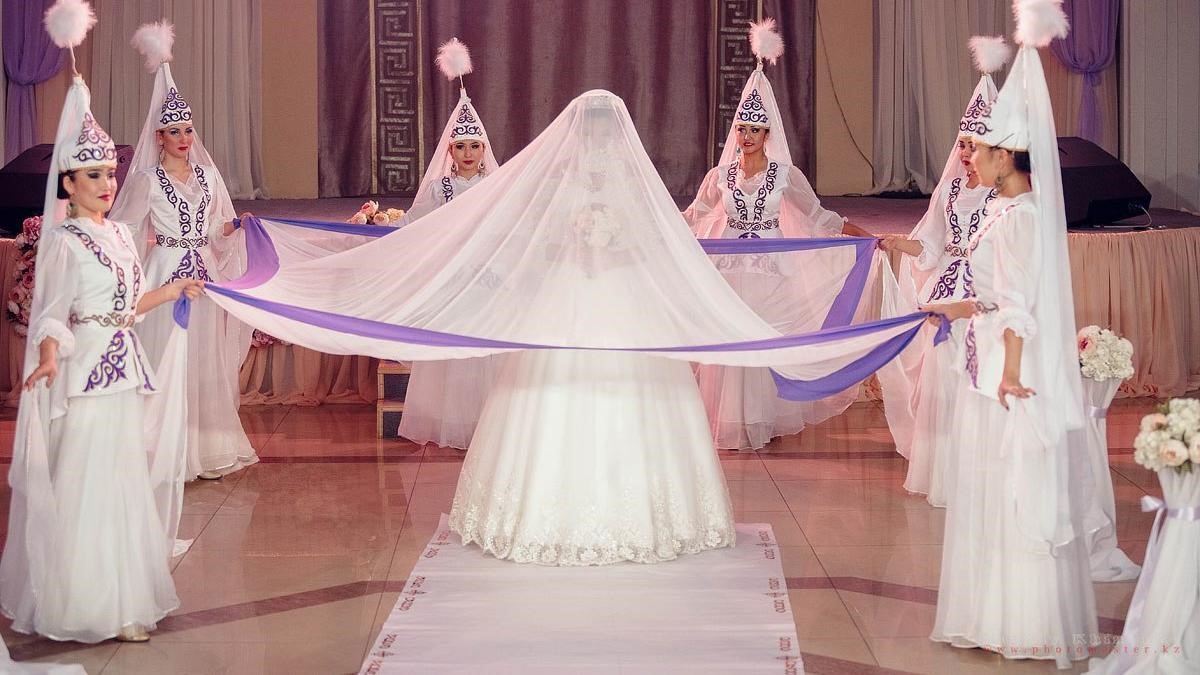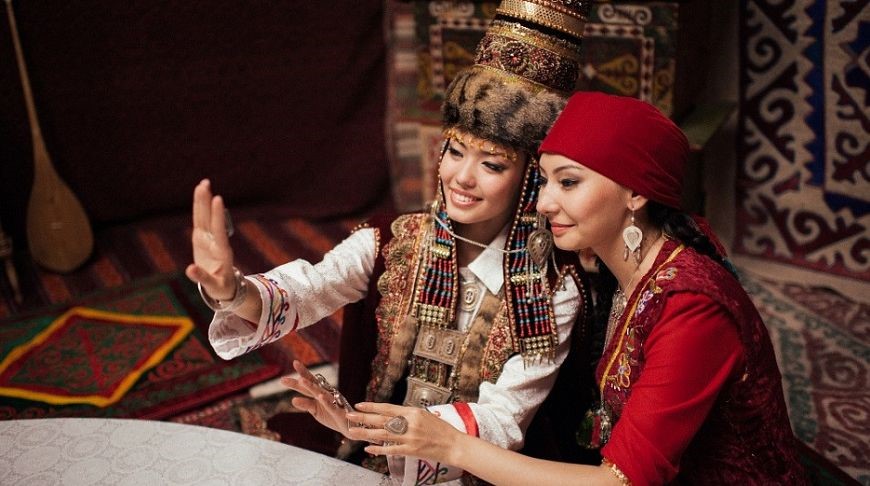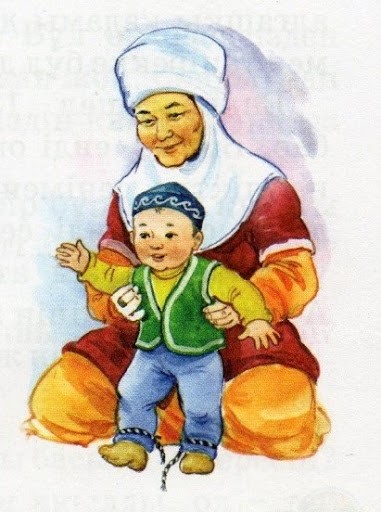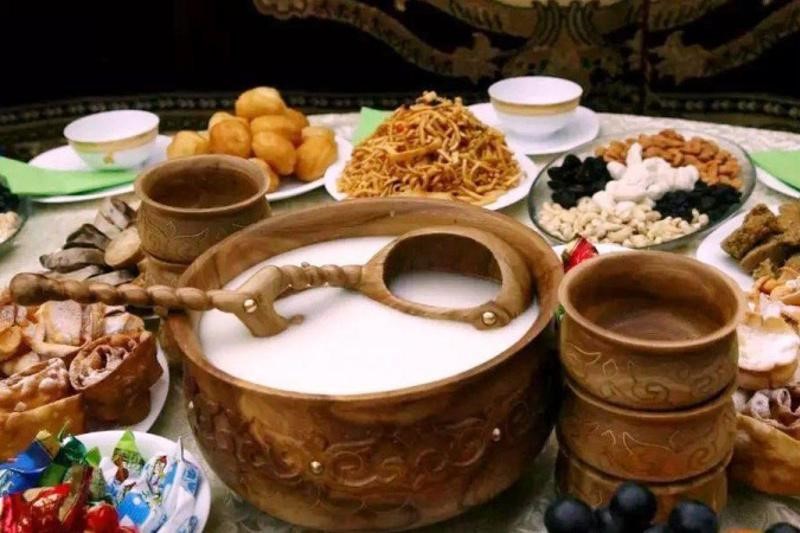Меню
Страницы
Статья
Traditions and holidays
Today, the Republic of Kazakhstan is a developed and flourishing country with up-to-date constitution and legal provisions. Along with the laws, the Kazakh nation honours and observes its traditions. The traditions of Kazakh people trace their origin back to the customs of nomadic tribes.
One of the fundamental traditions of Kazakh people, which became a national character trait, is hospitality. Hospitality in Kazakh society is a primary duty and entails reception of guests with open heart and welcoming embrace. A guest is the most important and desirable person at a house. It is customary to provide a guest with the most delicious food and do everything to make a guest feel in safety and comfort.
“Konakasy” is a hospitality tradition related to food for guests.
“Bata beru is a blessing given when a guest is leaving, especially for a long journey. A blessing is given by elderly people. Usually, the tradition is expressed poetically.
“Bel koterer” is food for the elderly guests, which symbolizes care and respect towards the elderly.
“Konakkade” is a tradition when a host asks a guest to sign a song or play a musical instrument.
“Yerulik” is a celebration devoted to new settlers, when assistance is provided to them and acquaintance with other settlers takes place to ensure adaptation to local life.
“Korimdik” is a gift given by a guest seeing a young married woman or newborn baby for the first time.
“Suinshi” is a custom according to which a person bringing good news to a house gets a valuable gift from hosts.
“Shashu” is a custom to shower guests with candies and money. Usually, children happily gather candies. From the dawn of time, the Kazakh people believed that candies gathered during “shashu” bring luck and prosperity to a family. Shashu is common at weddings, marriage proposals and other similar events.
The Kazakh people take good care of their traditions and skilfully follow them today. While small children expertly use computers and speak English, their grandmothers still wear national costumes and jewelry, so even despite a modern-day way of life and widespread digitalization, great mutual understanding and love prevail in such families. Customarily, a child from infancy is taught modesty and decency when communicating with adults.
One of the most significant events for the Kazakh people is wedding (“uilenu toy”). At least once in your life, you need to visit such a tremendous and significant event as a Kazakh wedding, where you can learn more about the wonderful traditions of Kazakhs.
Prior to the wedding, a marriage proposal (“kudalyk”, “kuda tusu”) should be made. Prospective relatives (groom`s relatives) visit a house of relatives from the side of bride. The procedure is deemed as an official acquaintance of two parties in a bride's house and is mandatory as the next wedding stages are discussed there. A bride's relatives provide guests with lavish treats and law a festive dastarkhan (table). A bride`s father gets gifts from a groom's relatives, which represent a downpayment. According to the Kazakh wedding tradition, after a marriage proposal a groom's side should pay “kalyn mal” (ransom for the bride). Then a bride puts in earrings (“syrga salu”), which represents a final agreement between the parties. The ceremony is performed by a groom's mother. Also, all bride`s relatives receive various gifts in the form of expensive fabrics or sets of gold and this wedding ceremony is called “kiit”.
Then a bride goes to a groom's house. It is a celebration, which precedes an official wedding and is called “kyz uzatu”, i.e. farewell ceremony for a bride. At the ceremony, guests from a groom's side are a minority. At the “kyz uzatu” ceremony, a bride should walk along a long white path made of fabric (“ak zhol”), which is a symbol of an undisturbed married life. Then, a bride along with relatives is sent to a groom's house. A bride's dowry arrives at the same time. A festive ceremony of meeting a bride is called “kelin tusiru”. The main element of kelin tusiru is performance of a traditional song with instructions and wishes called “betashar”. It is a crucial tradition for introducing a bride to the public. A bride's face is covered with a white cloth, which is held on both sides by relatives.

Despite a new European trends, today`s Kazakh wedding still preserves national traditions and customs. If previously wedding ceremonies took 3 days (and sometimes even more), today it can take one day. For their wedding dresses, brides usually choose white dresses. Also, such mainstream traditions as corteges, photo sessions at monuments, etc. gained popularity.

Specific attention is given to celebrations related to children. Thus, children are the greatest joy for each Kazakh family that is why there is a huge number of customs and traditions associated with their birth, growth and upbringing.
“Shildekhana” is a celebration dedicated to a birth of a child. “Esim koyu”, “at koyu”, “azan shakyru” is a custom of naming when a baby is given a name. The ceremony is entrusted to the most respected elderly members, who also bless a child.
The fortieth day of a child`s birth is celebrated in a special manner. The ceremony on this day is called “kyrkynan shygaru”. During the ceremony, a baby is bathed in water with silver coins and silver jewelry placed on the bottom. Also on this day, a child is given the first hair and nail cut.
The next custom associated with children is called “tusau kesu”. Thus, according to Kazakh traditions, on the day when a child takes first steps, fetters are cut. This is done so that in the future a baby can walk gracefully and run quickly, as well as adopting the best qualities of a person who cut the fetters. That is why only respected people and elderly, women with many children, etc. cut the fetters. A person has to cut special ropes entangling a child's legs using a knife.

Holidays
Public and national holidays of the Republic of Kazakhstan:
- January 1st and 2nd : New Year (public holiday)
- January 7th : Christmas
- March 8th: International Women`s Day (public holiday)
- March 21st, 22nd , 23rd: Nauryz (public holiday)
- May 1st : Kazakhstan People's Unity Day (public holiday)
- May 7th: Defender of the Motherland Day
- May 9th: Victory Day (public holiday)
- July 6th: Capital Day (public holiday)
- August 30th: Constitution Day (public holiday)
- December 1st: First President of the Republic of Kazakhstan Day
- December 16th and 17th: Independence Day (national holiday)
One of the main traditional holidays of the Kazakh people is Nauryz. Nauryz is officially celebrated in Kazakhstan for three days in a row: March 21st, 22nd and 23rd. Nauryz is called the New Year according to the ancient eastern calendar. On this day, yurts are installed on the streets of cities and villages of Kazakhstan, where everyone can taste festive treats. Mass games are held everywhere. Modern Nauryz has preserved the ancient traditions. Amidst revival of national culture, it is an important link in the "connection of times", history and modernity of Kazakhstan. The main ritual dish of this holiday is called “nauryz-kozhe”, which should consist of 7 ingredients (water, meat, salt, fat, flour, cereals (rice, corn or wheat) and milk). On September 30, 2009, Nauryz was included by UNESCO in the Representative List of the Intangible Cultural Heritage of Humanity, since that time March 21st has been declared the International Day of Nauryz.

"Photo taken from open sources"